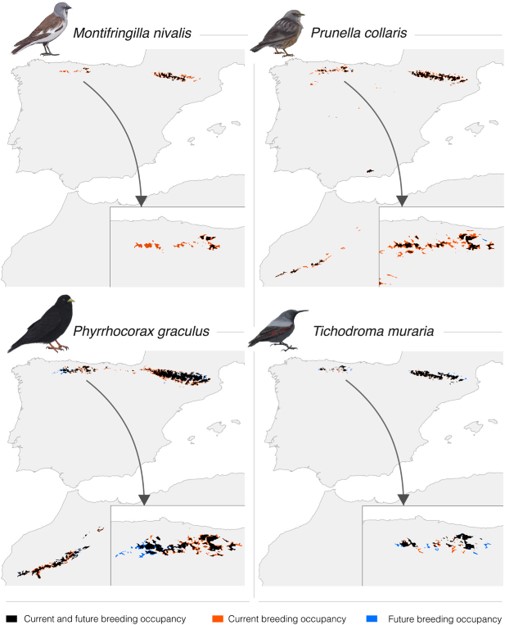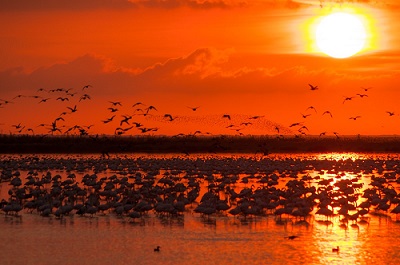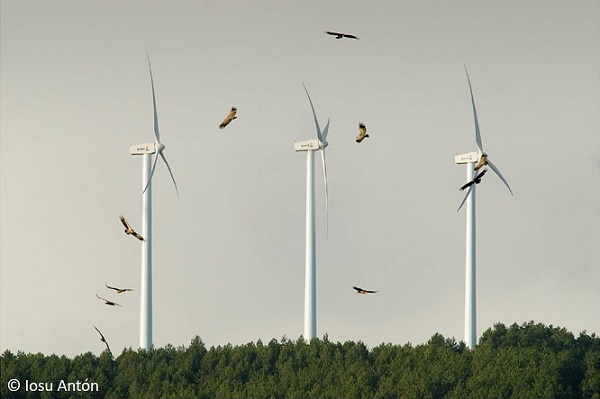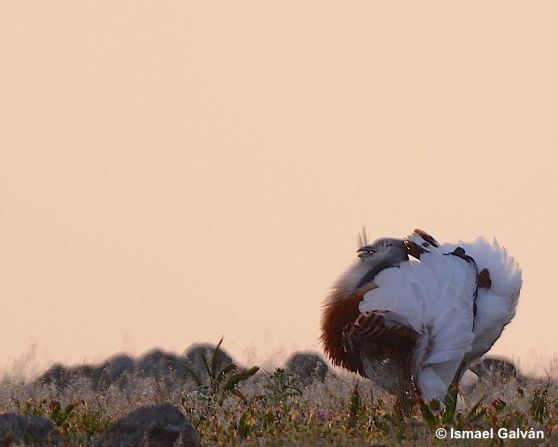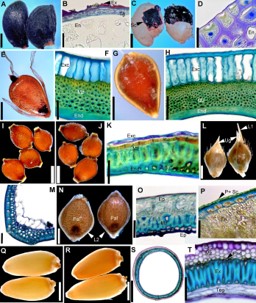Alpine ecosystems are particularly vulnerable to climate change. For widely distributed alpine specialists, rear-edge populations are disproportionately important. The importance and effects of climatic and landscape variables was assessed for 4 alpine bird species (Pyrrhocorax graculus, Prunella collaris, Montifringilla nivalis, Tichodroma muraria). Results indicate that the habitat suitability of rear-edge alpine specialists is limited mainly by climatic factors, restricting their suitable areas to the highest mountains where cold climate persist. For the period 2041–2060 a substantial reduction of suitable habitats was predicted. Thus, these alpine bird species, currently not considered as threatened, merit a review of their conservation status. Common distribution patterns and potentially similar responses to climatic change suggest that these findings might be applicable for other rear-edge alpine species. This study identified specific mountain systems where research and conservation efforts should focus for the conservation of alpine biodiversity in the southwestern Palearctic.
De Gabriel-Hernando et al (2021) Warming threatens habitat suitability and breeding occupancy of rear-edge alpine bird specialists. ECOGRAPHY https://doi.org/10.1111/ecog.05593
https://onlinelibrary.wiley.com/doi/10.1111/ecog.05593

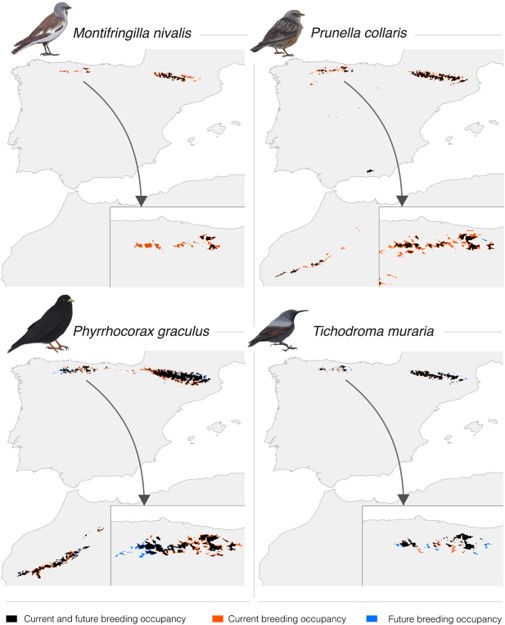
 Climate models predict a severe range contraction and upward shift of suitable habitat for alpine birds
Climate models predict a severe range contraction and upward shift of suitable habitat for alpine birds